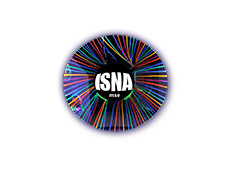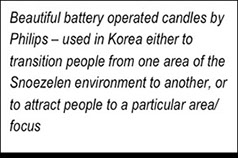New Zealand
My Snoezelen Journey…
by Sarah Moore, Hospital Play Specialist, NZ September 2015
I am extremely grateful for the opportunity provided by the Margaret M Blackwell Travel Fellowship (NZ) to travel overseas this year to explore Snoezelen environments. My main focus was to identify ways in which controlled multisensory sessions could be utilised to support transitions that hospitalised children faced, such as coming from home to hospital, and moving from one area of the hospital to another. While I had already observed benefits that our regular sensory sessions provided to patients and families on the neuroservices ward (such as reduced stress and anxiety), I was keen to explore in greater depth, ways in which these sessions could be used to help smooth hospital related transitions.
My journey started in Korea at the Seoul Rehabilitation centre, which housed two Snoezelen rooms as well as a portable Snoezelen wagon. Over 12 days I attended a wonderful and comprehensive Snoezelen training course provided by Professor Krista Mertens from Humboldt University (Berlin, Germany). Both theoretical and practical aspects of Snoezelen were explored in depth, providing a wealth of knowledge about ways in which controlled multisensory sessions could be offered to different participant groups such as children with ADHD and autism, young people with cognitive and physical disabilities, and adults with Alzheimer’s.
Individual session for participant on waterbed Preparing the environment for a group session
One of my highlights at the centre was observing a Snoezelen session provided for two young children. The use of a favourite children’s story (The Rainbow fish) was incorporated into the session to provide a sense of familiarity and comfort, thus supporting the children’s transition from home to the centre. A beautiful underwater atmosphere was created for this session, encouraging the children to actively explore the Snoezelen environment. For example, soft blue and green lighting was provided to represent the sea, a fibre optic curtain was used to create an underwater cave, and a multi-coloured rainbow fish constructed from balloons, scarves, and fibre optics featured in the room along with strategically placed shiny coloured ‘fish scales’.
Rainbow fish Underwater cave
The children’s interest and curiosity was clearly evident during this session, providing them with the motivation to explore each area of the Snoezelen room in order to locate as many of the fish scales as they could. Before the session ended, the children chose their favourite area to relax in and drew rainbow fish to take home.
After Korea I travelled to Japan, and was very kindly looked after by Dick Kosuga in Tokyo, and by Suzuyo Kawamoto in Osaka. Dick and Suzuyo took me to a wide range of Snoezelen environments in hospitals, hospices, residential care facilities, day care facilities and community run organisations. One lovely facility I visited was situated in a small room in a suburban apartment block. This beautiful little space, developed by Takuya and Atsuko Hashimoto, was set up to enhance secure attachments as well as to support development by encouraging sensitive, responsive parent-child interactions. Many of those attending were parents who had babies or infants with undiagnosed developmental delays, and had been referred by medical professionals. Parents were encouraged to be fully engaged in pleasurable and relaxing experiences with their children, and provided with lovely simple and inexpensive ideas that they could use at home to support their child’s development.
Snoezelen environments, Japan
A number of the Snoezelen facilities I visited in Japan were accommodated in institutions for people with profound cognitive and physical disabilities. These sessions were more often based on the philosophy of free Snoezelen (where people are encouraged to explore the environment at their own pace and in their own way), rather than guided Snoezelen (where sessions are more structured and generally include initial exploration of the environment followed by a planned activity and a period of relaxation such as guided imagery or massage). As with all countries I visited, Snoezelen sessions were largely influenced by the training and philosophy of companions, teachers and session facilitators. For example, some provided sessions that were focussed primarily on relaxation and wellbeing, while others incorporated therapy or educational goals in their sessions.
The use of recycled materials in Japan was evident in many Snoezelen centres and facilities. In one hospital setting, cardboard box cars were being used to slide toddlers down cardboard ramps which were adorned with chopsticks and foam packing strips to provide sensory stimulation – the children loved this activity! In the same hospital I observed play specialists providing a wonderful sensory session for a severely disabled child in her room. Planning for this session had been skilfully undertaken, and resources provided were (cleverly) simple and effective - for example, black material was held over the child’s head to darken the environment and reduce stimulation, while resources such as colour-changing lights were presented one at a time for the child to explore at her own pace. (This idea I have implemented on the neuroservices ward at Starship Children’s Hospital in Auckland, with great effect.)
Sensory session in hospital, Japan
In Germany I was kindly hosted by Krista, travelling with her to a variety of places such as Rhede (where she provided Snoezelen training for an enthusiastic group of healthcare professionals at St Vinzenz Hospital) and Frankfurt Order (where she offered her expertise to help redesign a Snoezelen room in need of an upgrade).
Changing moods in a hospital Snoezelen room, Germany
Krista and I visited a lovely small Snoezelen room at a secondary school - this room was very popular with both teachers and students, and was frequently used throughout the day with groups of 2-15 children. Teachers reported that due to the ability to control the sensory environment, children were generally less distracted and more focussed during Snoezelen sessions than they were in the classroom - thus sessions were utilised to reinforce learning in a practical way, as well as to settle and relax children at the beginning at end of the school day in order to ease transitions between school and home.
School Snoezelen room, Germany Adapted kindergarten environment
Small group Snoezelen sessions with an educational focus were also available at some kindergartens in Germany. The predetermined theme of one session I observed focussed around basic spatial concepts relating to location (eg, up, down, in and out). This session was provided by a lovely visiting Snoezelen teacher, who facilitated guided sessions by temporarily transforming the kindergarten room into a magical Snoezelen space (using material to cover up superfluous furniture and resources). The hour long session I observed involved 7 children aged from 18 months to 3 years. This session was planned around a ride in an imaginary hot air balloon (which had been created in the centre of the room using an air filled paddling pool filled with beanbags and covered with a colourful parachute). At various times during the session, activities such as singing, imaginative play, storytelling and sensory exploration were introduced, with children enthusiastically contributing their own ideas while completely immersed in their fabulous balloon ride experience.
In Denmark, I was excited to meet Maurits Eijgendaal, and to visit Golden Horn, an amazing state of the art Snoezelen centre in Solund. Maurits kindly guided me through Golden Horn’s nine different sensory rooms, and provided me with fascinating information about the facility as well as plenty of time to explore the environment. It was amazing to hear how people’s individual environmental preferences at Golden Horn could be stored on a computerised card and used during future visits to support their sense of wellbeing. This facility, like other inspiring Danish centres I visited in Helsingor and Brondby, respectfully supported transitions in a number of ways, for example, by encouraging family participation, by timing sessions immediately before stressful events so as to reduce anticipatory anxiety, and by incorporating familiar resources (such as favourite toys)and individual preferences in the sensory environment.
Golden Horn, Solund, Denmark
In Switzerland I met David Gruppe, and experienced a delightful and relaxing Snoezelen session involving his two wonderful young children – these boys had massage down to a fine art and were kind enough to share their skills with me! I had the pleasure of staying with David and his family, and travelling with him to Corbier, where he was providing some much appreciated Snoezelen training sessions for employees at a day care facility for adults with cognitive impairments. A very special moment for me in Corbier was observing quality interactions between skilled (attentive and compassionate) companions and their clients.
The beautiful Snoezelen environments I visited in Switzerland were similar to those I saw in Korea, Japan and Germany – carefully designed white rooms which allowed for creative environmental change. In contrast to this were the brightly coloured Snoezelen environments I observed at two special schools and an orphanage in Ostrava and Brno, Czech Republic. These facilities provided a much higher level of visual stimulation (aimed to arouse interest), with a variety of colourful furniture and resources displayed in the rooms.
In Ostrava, Marek Svasta (a designer of Snoezelen rooms) kindly showed me a great variety of sensory environments. Our first visit was to an amazing orphanage run by Renata Filatova. As many of the children here had experienced abuse or neglect, sessions were carefully planned to support development of self-esteem, communication skills and trusting relationships. I was impressed with the wide range of beautiful resources that Renata had available for different Snoezelen sessions, and interested to hear how these were utilised to assess children’s understanding and development.
Snoezelen rooms, Czech Republic
Spain was my final Snoezelen destination. Based in beautiful Bilbao, I enjoyed the opportunity of attending a small centre for children run by Janire Rojas Cano, whom I had met while training in Korea. Janire was great at finding wonderful creative solutions for environmental challenges (such as lack of curtains or blinds for darkening her room), for example, by transforming a large bathroom into a small and exciting sensory room, much to the delight of the children. Sensory sessions were generally provided at the end of the day to settle the children before their journey home.
Exploring fibre optics, Bilbao
Over the course of my journey, I documented conversations, observations, thoughts, and discoveries. The information I gathered highlighted a number of strategies used by Snoezelen professionals and facilitators to support transitions that could be applied to the hospital environment. These include:
• overall focus on participant wellbeing and relaxation
• involvement of family members or caregivers
• development of clear goals focussed on individual interests, capabilities, culture and identity
• provision of trained (compassionate, attentive and reflective) companions, facilitators and teachers
• regular planning and evaluation of sensory sessions in relation to individual (client/patient) goals
• provision of flexible sensory environments which offer choice and encourage curiosity
• provision of adequate time for individuals to explore and respond to the environment
• provision of adequate time and opportunities for participants to develop trusting relationships with others
• encouraging and supporting participants to ask questions
• the incorporation of familiar objects and activities
• the use of transitional objects (such as toys, pictures, communication books, art) that individuals can bring to sessions or take home
• seeking regular feedback from participants in relation to their sensory experiences
Benefits of Snoezelen sessions to support transitions were readily observed throughout my travels and highlighted in the many anecdotal stories that people shared. I am now enjoying developing my regular Snoezelen sessions on the ward with greater awareness about transitional support.
With sincere gratitude and appreciation, I would like to acknowledge and thank the kindness and generosity of the many Snoezelen professionals, training providers, companions, teachers, play specialists and Snoezelen participants who gave freely of their time, energy, knowledge and wisdom. I am unable to mention you all in this report, but I sincerely thank each and every one of you for supporting me on my journey, and making this experience such an amazing one. I hope that I will be able to return the favour one day if you visit New Zealand…!
Kind regards,
Sarah Moore
Hospital Play Specialist
Starship Children’s Hospital, Auckland, NZ
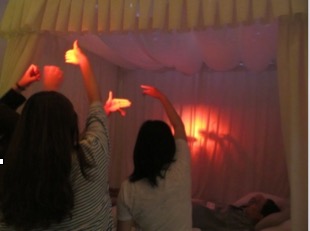
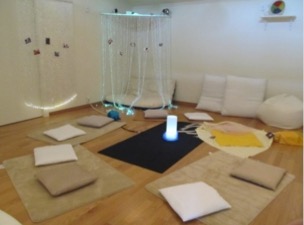
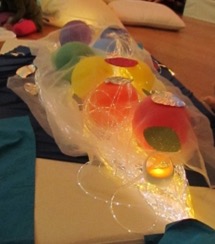
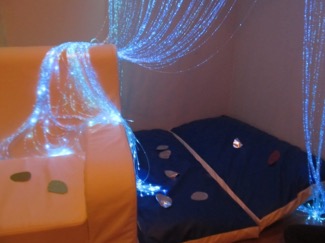
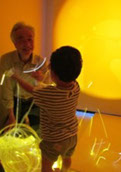

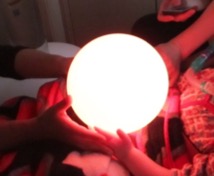
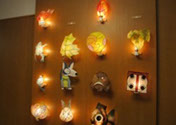
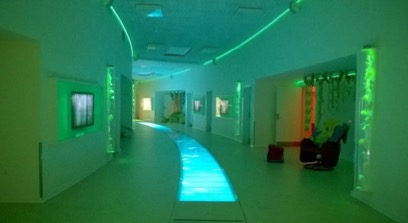
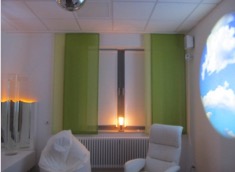
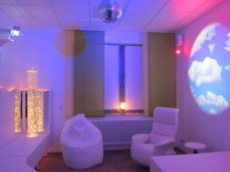
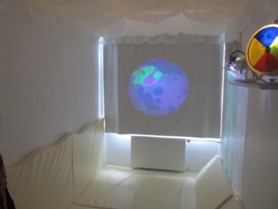
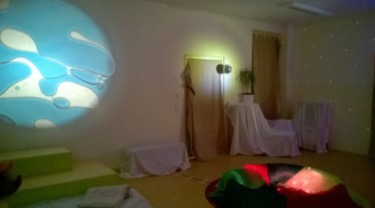
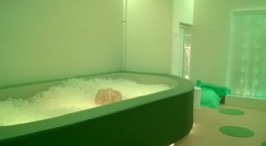
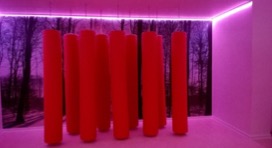
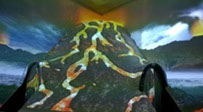
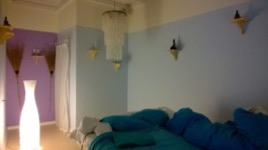
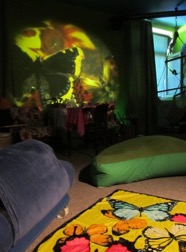
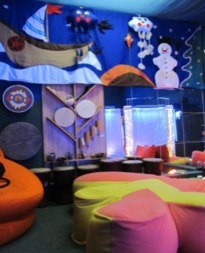
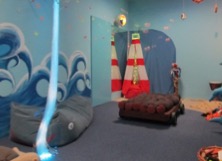
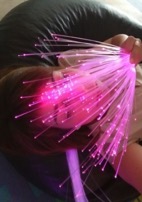
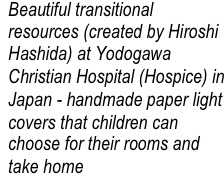

ISNA-mse.org
